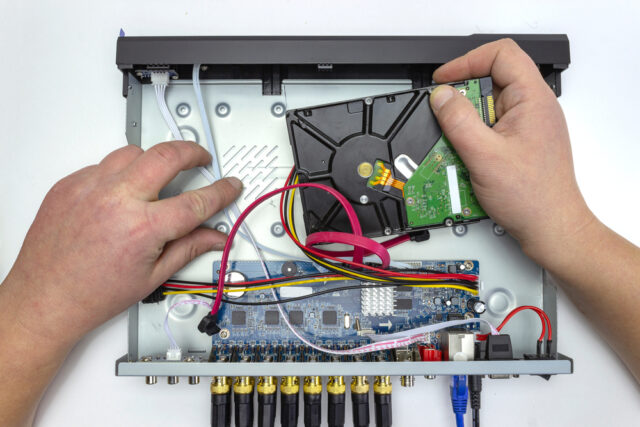
Parsing the AHD system (TVI, CVI) and network IP video surveillance
Despite the massive popularization of cloud IP cameras for video surveillance over the Internet, many people still defend the advantages of analog monitoring. We will analyze whether it is worth doing this and which surveillance option is better in our article.
What system to choose?
Connecting an analog CCTV camera is suitable for small video systems. There will be a stable signal and acceptable quality at a short distance from the device to the recorder. This will allow you to control the general situation at the facility (for example, the area of a private house or a small office).
The network system will be required already at larger-scale facilities:
- shopping malls, stores;
- parking;
- public places;
- production, etc.
IP cameras can operate over long distances wirelessly and without losing signal quality. And also, various analytical functions can be connected to network video surveillance.
In general, when choosing a monitoring system, you need to start with the scope, purpose of the application, and budget.
Analog systems
Although analog video cameras for video surveillance are a thing of the past, they still remain on the market. Why this happens, we will analyze further.
Advantages
The main advantages of analog systems are as follows:
- stable signal and independence from the quality of the Internet within the cable;
- no conflicts when devices from different manufacturers are introduced into a single system;
- simplicity of setting up the equipment before the first start-up;
- when replacing analog surveillance, it is not necessary to change cables.
Disadvantages
Cons of analog cameras:
- limited functionality, lack of video analytics;
- the need to purchase additional equipment for data storage (recorders, hard drives, wires, etc.);
- lack of focus on the desired object;
- difficulty in scaling the system (there are restrictions on the number of cameras depending on the recorder model);
- a large number of wires are required for the stable system operation;
- camera resolution up to 8 megapixels;
- camera sensitivity and frequent interference.
Read more about building an analog system in the article: “A complete list of expenses for home video surveillance.“
Network IP video surveillance
A network video surveillance camera is used today in almost all spheres of human activity. It has its disadvantages compared to analog systems, but its advantages easily override this.
Pros
IP surveillance has taken over the global market thanks to:
- video analytics and segment recording capabilities that save system bandwidth;
- camera resolution over 12 megapixels;
- focus, panorama, zoom, and excellent detail shooting functions;
- application is possibilities for business marketing tasks;
- simplicity of scaling the system, you can connect a new camera via the Internet;
- the possibility of both wireless data transmission and with an Ethernet cable.
Cons
There are not so many disadvantages of network monitoring as it might seem. They are mostly:
- limitation on the distance of distribution by a Wi-Fi router, but wireless signal amplifiers solve this;
- value for money. You can find a budget model for your home, but for a large factory, you need to choose quality cameras.
Faceter cloud video surveillance
One of the best options for network surveillance in the global market is the Faceter service. Faceter:
- is functional for home and business;
- has video analytics. Read more about the possibilities here;
- offers reasonable tariffs;
- includes cloud storage system;
- utilizes wireless data transmission;
- is easily scalable.
The service connection algorithm is simple:
- You need 2 mobile phones or as many IP cameras as required.
- Download the Faceter app to your phone.
- Scan the code.
- Install cameras or phones in the desired location.
- Open the application and press the red button.
- Log into your account on another device acting as a monitor.
This is how, on average, for $3 a month, you will get yourself intelligent video surveillance without unnecessary equipment and wires.
Conclusion
Network and analog video surveillance can meet the needs of the consumer. But IP monitoring is gradually replacing outdated systems on the market. It’s time for smart surveillance; it’s time to use the Faceter service.














